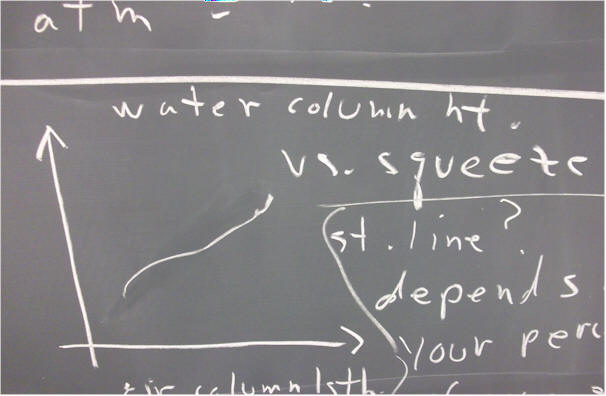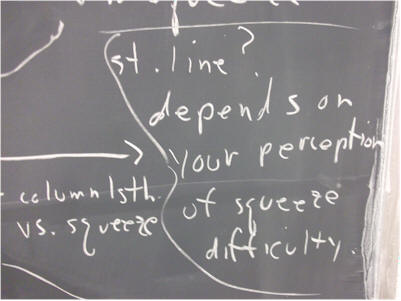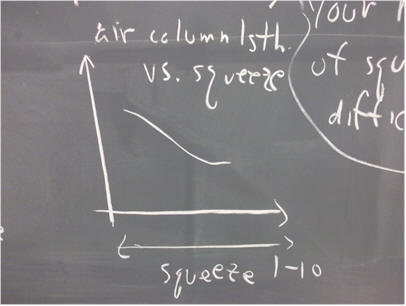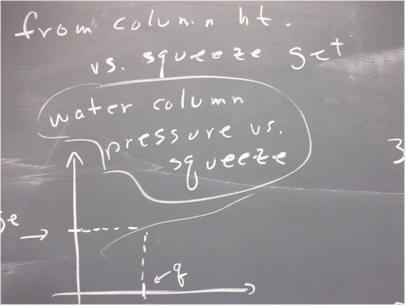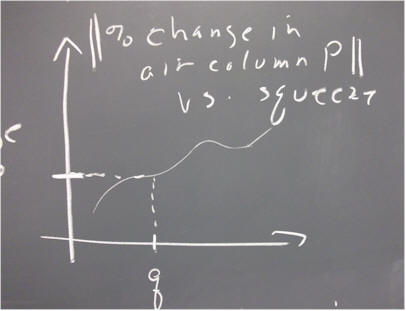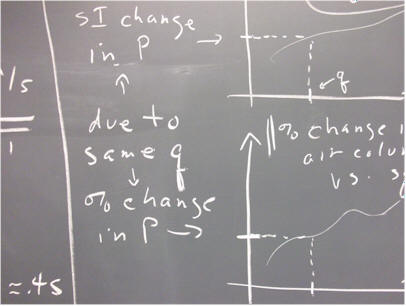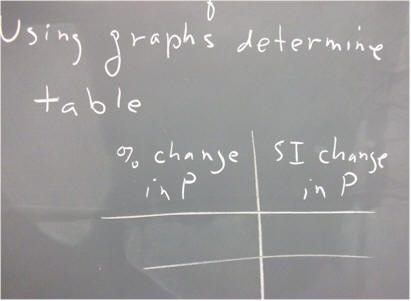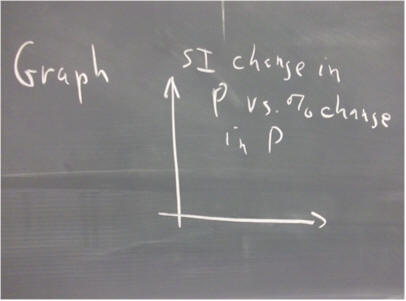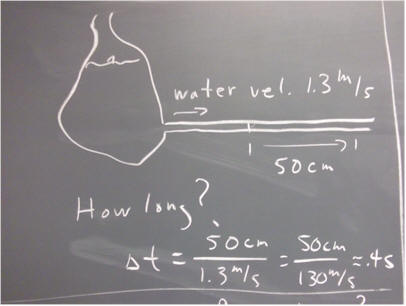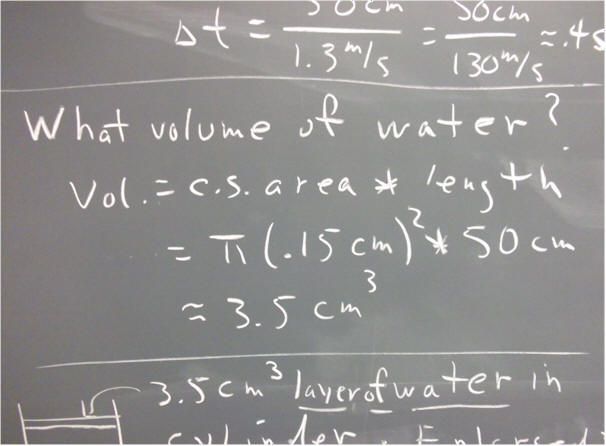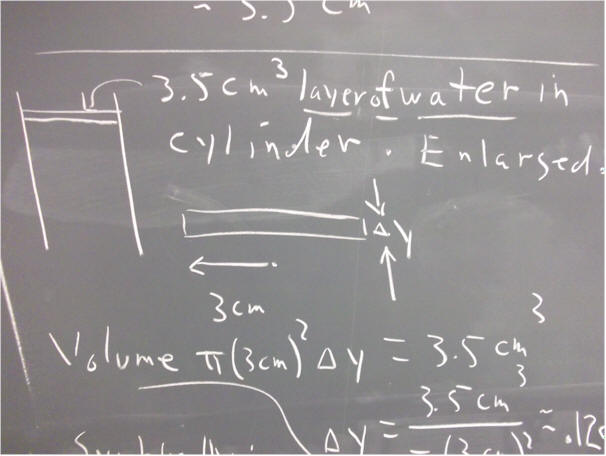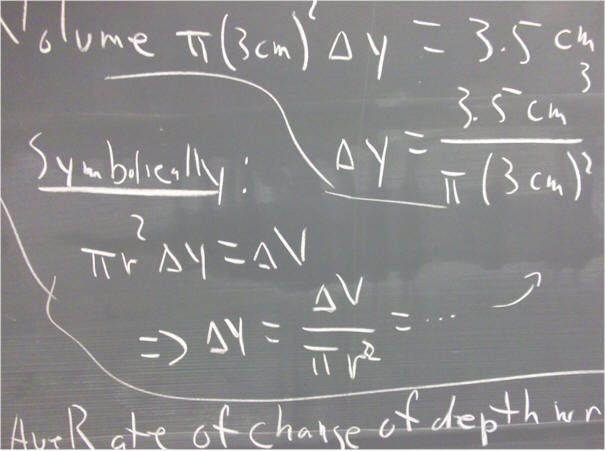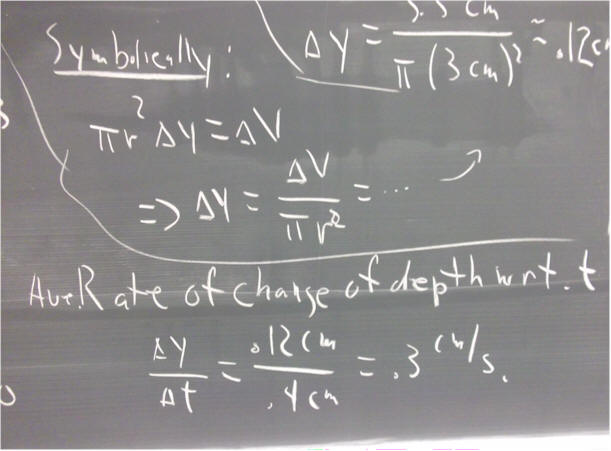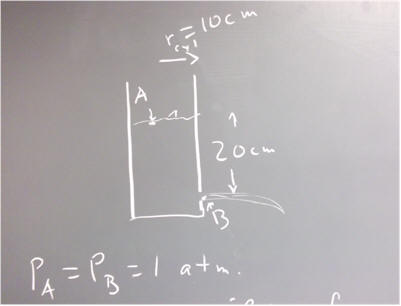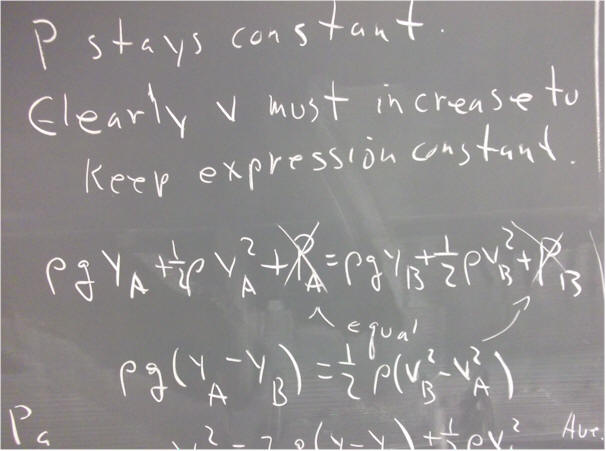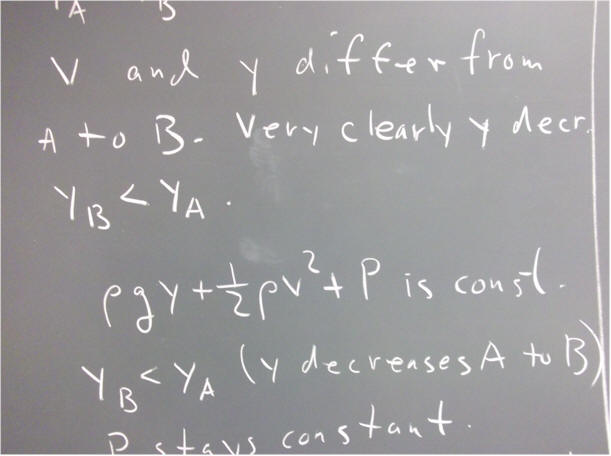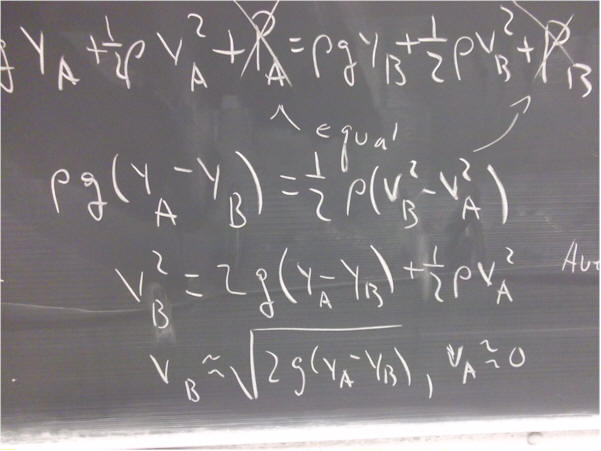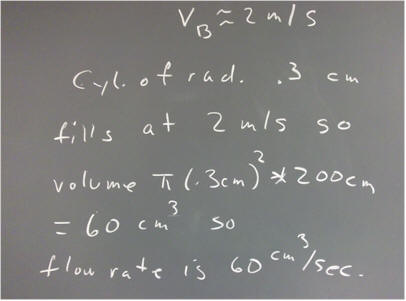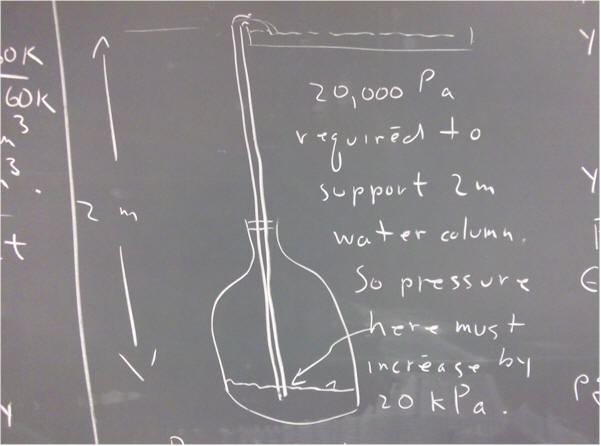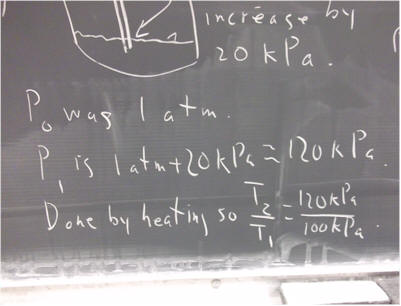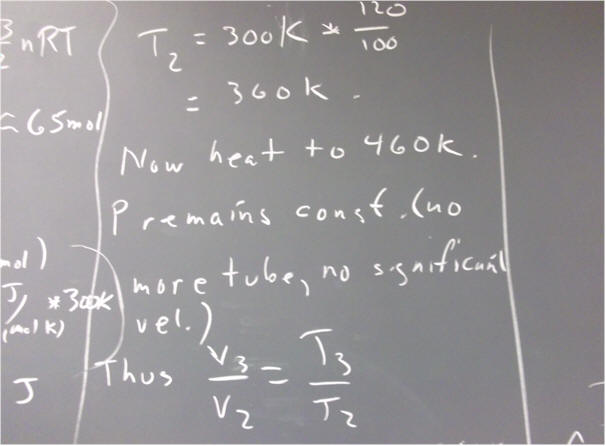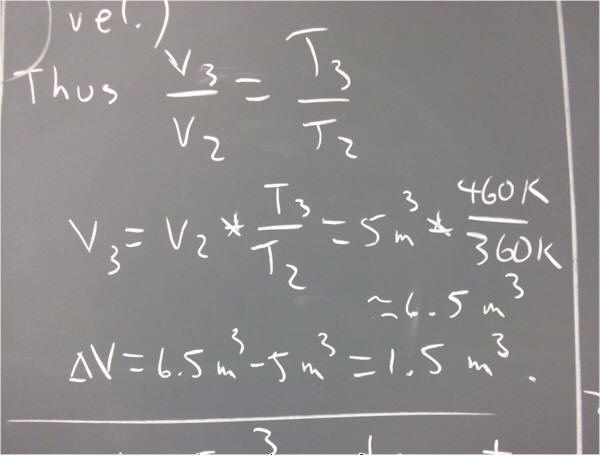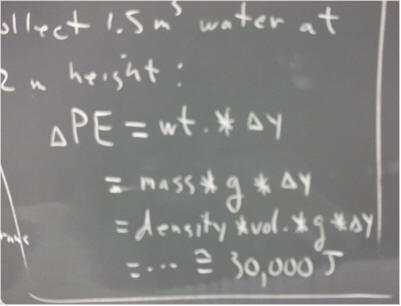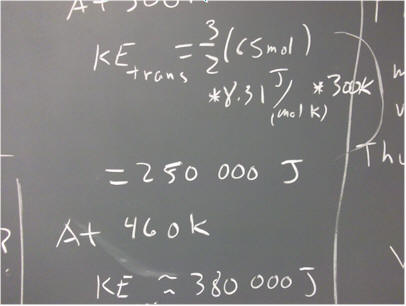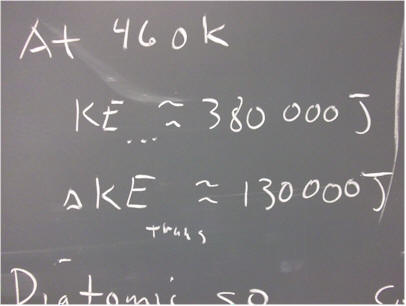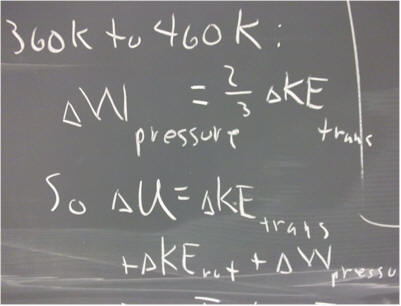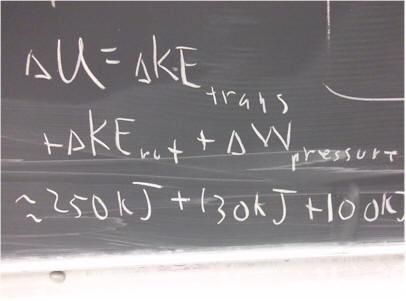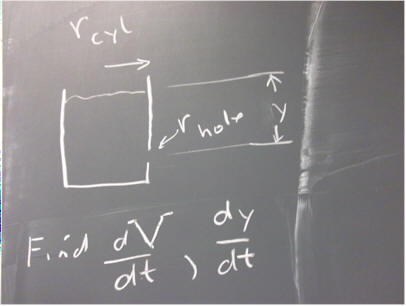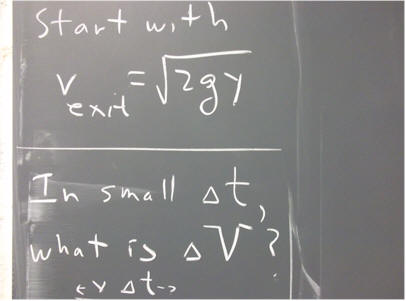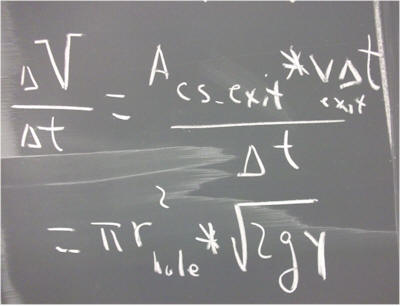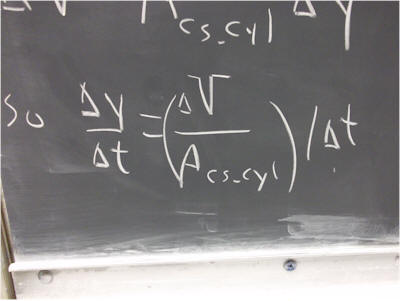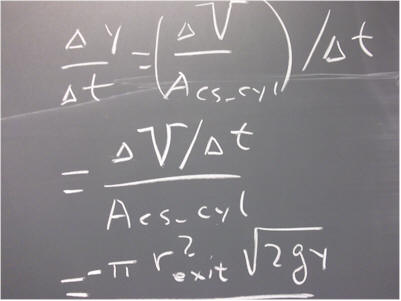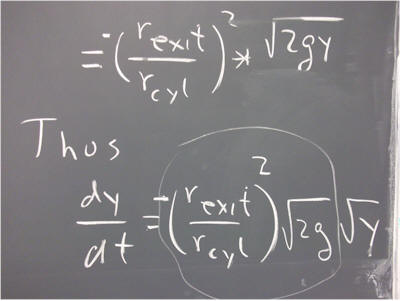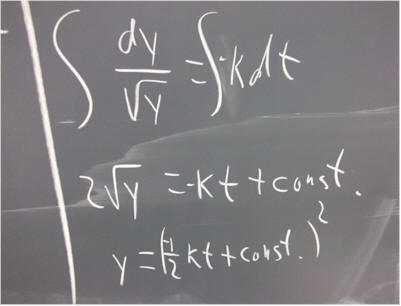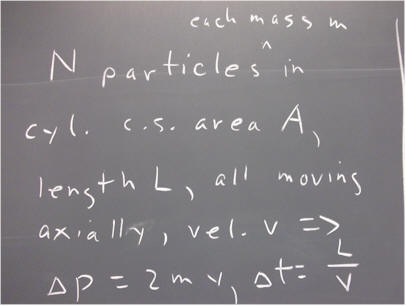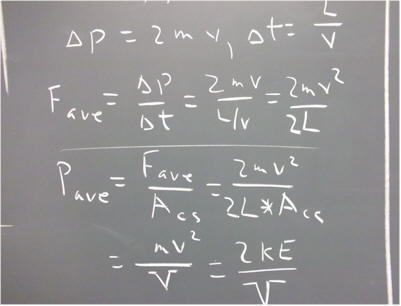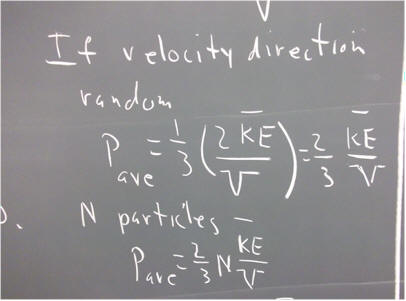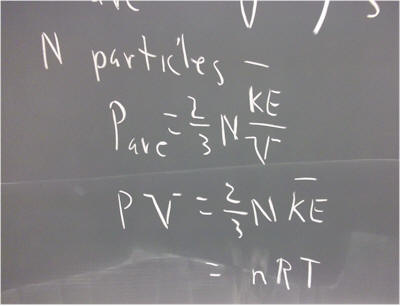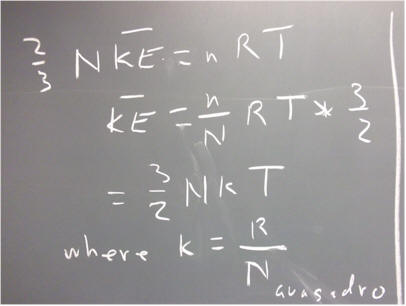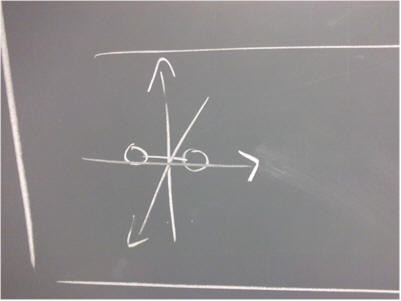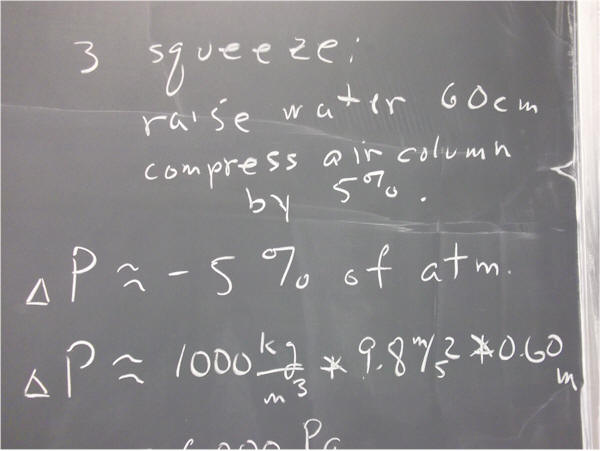
110131 Differential Equations
Notes for the 110131 Differential Equations Class have been corrupted.
Notes will be distributed on DVD, which will be sent to all students.
Do not assume any specific value for atmospheric pressure. You will eventually conclude a value, based on observations, which will be more or less consistent with the accepted value of about 100 000 Pa.
`q001. Squeezes judged by one experimenter as 1, 4 and 9 on a 1-10 scale resulted in water column heights of 12, 50 and 100 cm.
Squeezes judged by the same experimenter as 2, 5 and 8 on the same 1-10 scale resulted in air column lengths of 29, 27 and 26 cm, where the air column is 30 cm long at atmospheric pressure.
Calculate the additional pressure needed to support the water column, for each of the observed heights.
****
#$&*
Calculate the air column pressure, in atmospheres, for each observed length.
****
#$&*
Sketch a graph of water column pressure vs. estimated squeeze and sketch the straight line you think best fits this graph.
Sketch a graph of air column pressure vs. estimated squeeze and sketch the straight line you think best fits this graph.
Give the slope of each of your straight lines.
****
#$&*
Based on your two graphs, what would you conclude is the value of atmospheric pressure?
****
#$&*
Based on your own similar observations, what would you conclude is the value of the atmospheric pressure?
****
#$&*
`q002. Water exits a cylindrical container, whose diameter is 6 cm, through a hole whose diameter is 0.3 cm. The speed of the exiting water is 1.3 meters / second.
****
#$&*
How long would it take the water to fill a tube of length 50 cm?
****
#$&*
What volume of water exits during this time?
****
#$&*
By how much does the water level in the cylinder therefore change?
****
#$&*
What is the ratio of the exit speed of the water to the speed of descent of the water surface in the container?
****
#$&*
`q003. Let point A be the water surface in a cylindrical container of radius 10 cm. Let point B be just outside a hole in the side of the container, 20 cm below point A. The hole has diameter 0.6 cm.
... conceptual ...
One of the three quantities P, v and y in Bernoulli's equation is the same at both points. The other two quantities are each different at A than at B, one being greater at A and the other greater at B.
****
#$&*
Which is constant?
****
#$&*
Which is greater at A?
****
#$&*
Which is therefore greater at B?
****
#$&*
Write down Bernoulli's Equation for this selection of points, and use the equation to determine the 'ideal' velocity of the water as it exits the hole.
****
#$&*
If water exits the hole at this rate, at what rate is the surface of the water in the cylinder descending?
****
#$&*
University Physics students: What is the differential equation that relates water depth to exit velocity?
****
#$&*
`q004. Starting at 300 K and atmospheric pressure you heat the gas in a bottle until the added pressure is sufficient to support a column of water 2 meters high, in a tube of negligible volume. You then manage to heat the gas another 100 K.
By what percent does the volume of the gas change, from beginning to end?
****
#$&*
If the gas has initial volume 5 m^3, then how many m^3 of water will be displaced by the expansion?
****
#$&*
If this water is collected in a reservoir 2 meters above its initial height, by how much does the gravitational PE of the system increase?
****
#$&*
By how much will the total translational KE of the molecules in the gas change during the process?
****
#$&*
How much work will the gas do against pressure as it expands?
****
#$&*
If the gas is diatomic, how much will the total rotational KE of the molecules change during the process?
****
#$&*
What is the ratio of PE change to the energy added to the gas?
****
#$&*
`q005. A hot rock is dropped into a liter of water, increasing the water's temperature from 10 Celsius to 40 Celsius. How much thermal energy did the water gain from the rock?
****
#$&*
If during the process the water also lost 5000 Joules of energy to the surroundings, how much thermal energy did the rock lose in the process?
****
#$&*
thermo (energy into gas; P vs. V)
bernoulli
continuity equation
efficiency increases with T_h / T_c
heat flow, heat quantity
brief expt flow exp


